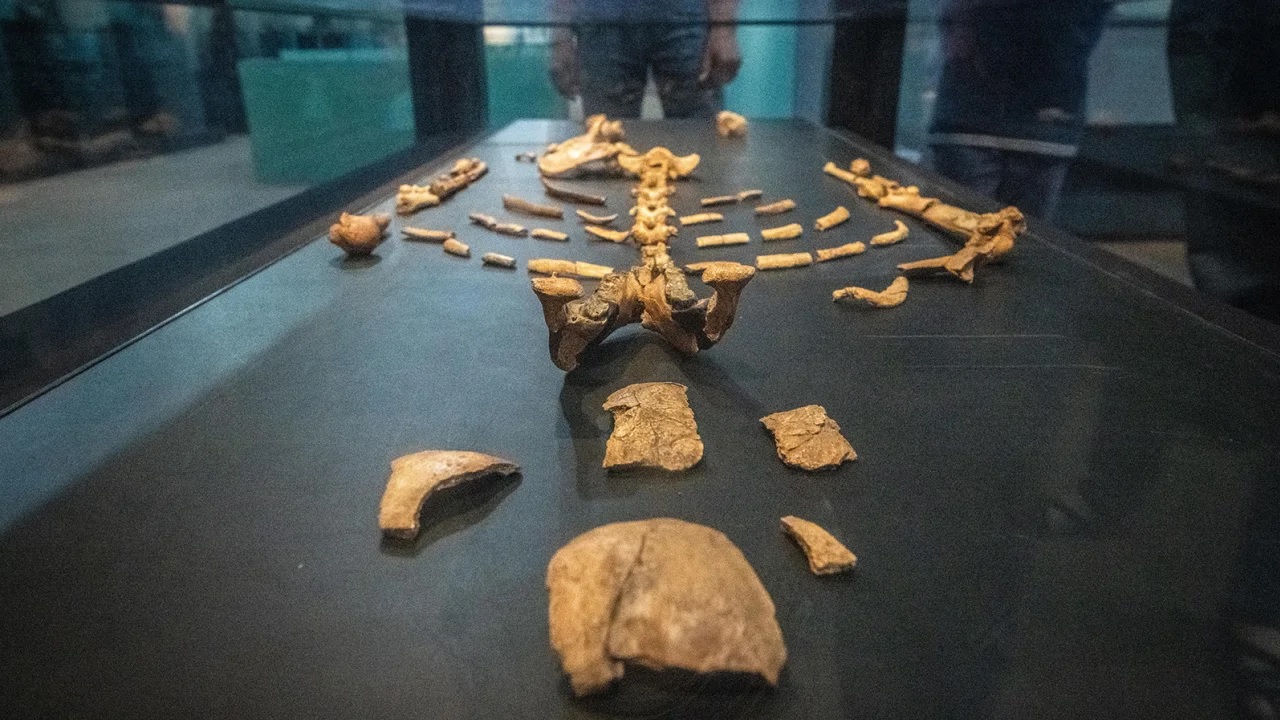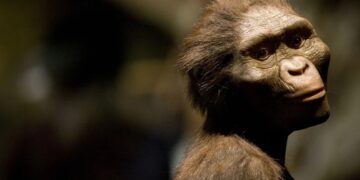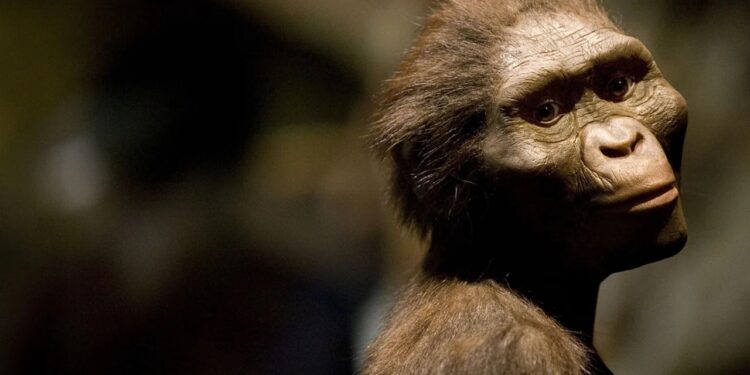By John Ikani
Cambridge researchers have made groundbreaking discoveries about Lucy, the renowned early human ancestor.
By digitally reconstructing her lower limb muscles, scientists have uncovered fascinating details about her unique abilities.
The findings, published in the journal Royal Society Open Science, reveal that Lucy possessed knee joints that enabled upright walking, much like modern humans.
Also, her leg muscles were stronger and more robust than those found in contemporary humans, indicating her proficiency in both arboreal and terrestrial environments.
The remarkable lower body muscle structure of Lucy allowed her to thrive in diverse habitats such as open grasslands and dense forests.
While her movement cannot be observed in any existing species, the team believes that these findings offer valuable insights into the evolution of human locomotion and shed light on certain capabilities that have been lost over time.
Dr. Ashleigh Wiseman from the University of Cambridge’s McDonald Institute for Archaeological Research commented on the significance of their research.
“We are now the only animal that can stand upright with straight knees. Lucy’s muscles suggest that she was as proficient at bipedalism as we are, while possibly also being at home in the trees.”
Lucy, a member of the extinct species Australopithecus afarensis, represents an early human relative characterized by small stature and brain size.
Her fossilized remains were discovered in 1974 in northern Ethiopia, comprising approximately 40% of her skeleton.
This remarkable find includes various bones, such as those from the arms, legs, spine, ribs, pelvis, lower jaw, and several skull fragments.

Throughout the years, experts have debated how Lucy moved. Some speculated that she walked in a crouched and waddling manner similar to chimpanzees, while others argued for a gait resembling that of modern humans.
To gain further insights, Dr. Wiseman constructed a digital 3D model of Lucy’s leg and pelvis muscles.
The virtual reconstruction revealed that Lucy’s calf and thigh muscles were more than twice the size of those observed in present-day humans.
In fact, muscles accounted for a staggering 74% of the total mass in Lucy’s thigh, compared to 50% in humans.
Dr. Wiseman emphasized the significance of understanding the role of muscles in determining an organism’s ability to walk upright, stating, “Lucy’s ability to walk upright can only be known by reconstructing the path and space that a muscle occupies within the body.”
It is believed that Australopithecus afarensis inhabited a range of environments, including open wooded grasslands and dense forests in East Africa three to four million years ago.
The reconstruction of Lucy’s muscles suggests that she was highly adaptable and capable of effectively exploiting both habitats.
The discoveries surrounding Lucy provide a deeper understanding of early human evolution and the complex adaptations that paved the way for our modern bipedal locomotion.
As researchers continue to unravel the mysteries of our ancient ancestors, Lucy remains an iconic figure, representing a remarkable bridge between our primate past and the development of our human lineage.


































